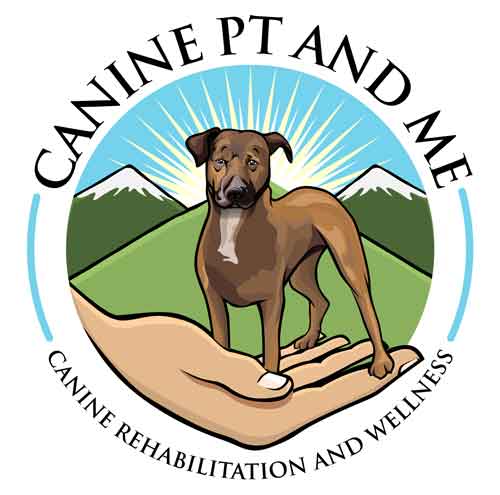Conservative vs. Surgical Intervention
Our previous post covered the anatomy of the spine, different types of IVDD, how it is diagnosed, and common symptoms. The proper treatment depends on the severity of the dog’s symptoms. If your dog is experiencing mild to moderate symptoms, they will likely respond well to conservative management with a certified canine rehab therapist. However, if your dog is showing more severe symptoms, surgery is generally recommended. The breed of dog, duration of symptoms, and location and type of the herniation can help determine the outcome as well.

Your dog is generally prescribed anti-inflammatory medication and crate rest with conservative management of IVDD. During this time, an active rest period is more beneficial than strict crate rest. A certified canine rehab therapist will prescribe an appropriately controlled exercise program with slow progressions. If your dog is completely immobile during the crate rest period, it can actually do more harm than good. For example if someone sat in bed for a few weeks, they would feel stiff, their muscles would atrophy, and they could lose some of their range of motion. The same things happen to dogs. So while crate rest may provide temporary relief, your pup may experience other issues down the road. Please consult with your local canine therapist to inquire about a plan of care for your dog who is experiencing mild or moderate IVDD symptoms.
If your dog has more severe neurological symptoms such as the inability to make any deliberate movement with their legs, or has loss of bowel/bladder, surgery is highly recommended. The surgeon will relieve the portion of compressed spinal cord and remove any present disc material. This will free up the neurological pathways from the brain to the extremities.
What to Expect after Surgery for IVDD
After surgery, your dog should see a certified canine rehab therapist to help improve their strength and mobility. Your therapist will be able to create a hands-on, personally tailored exercise program for your dog including cold laser therapy for pain relief and tissue healing. As your dog progresses, your therapist will use manual techniques and specifically targeted strengthening exercises to get your dog back to their functional activities.
You might ask yourself, is there any way to prevent IVDD? Here are a few tips for prevention:
- Manage your dog’s weight to prevent obesity. Increased weight causes more compression on the spine and discs.
- Reduce high impact activities such as jumping on/off furniture. Instead, use a ramp or dog stairs to access furniture.
- Walk your dog with a harness instead of a collar. This will reduce the pressure on the neck of your dog.
Regardless of the path your dog takes for treating their IVDD, conservative management or surgery, your canine rehabilitation therapist should be a part of their treatment plan. This will ensure their best chance at recovery to get them back to their happy selves again.
~Canine PT and Me Team
